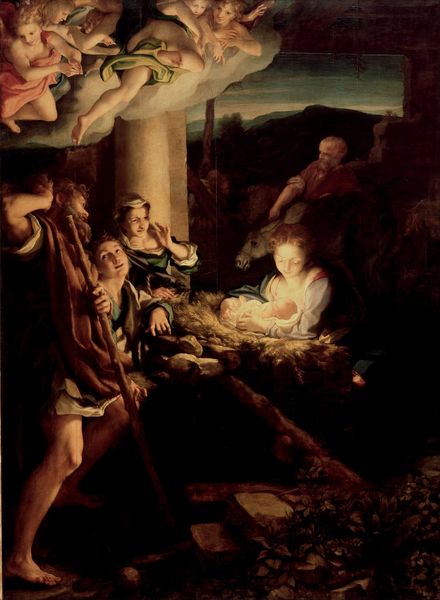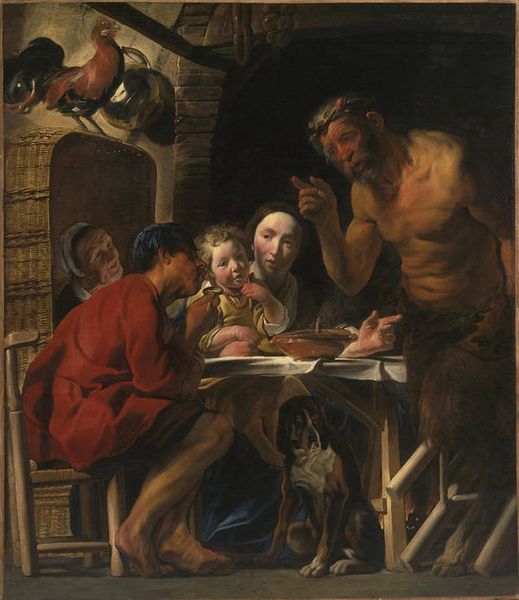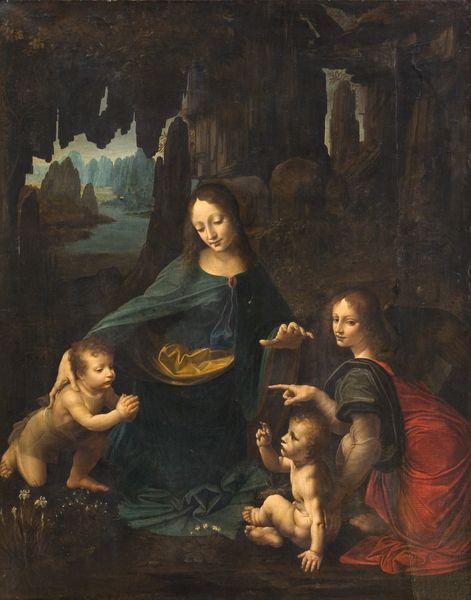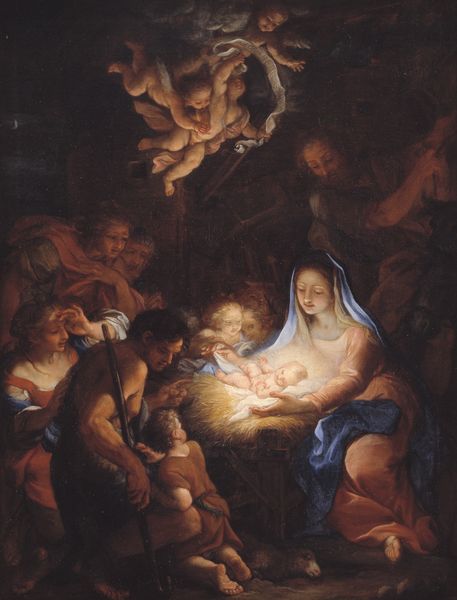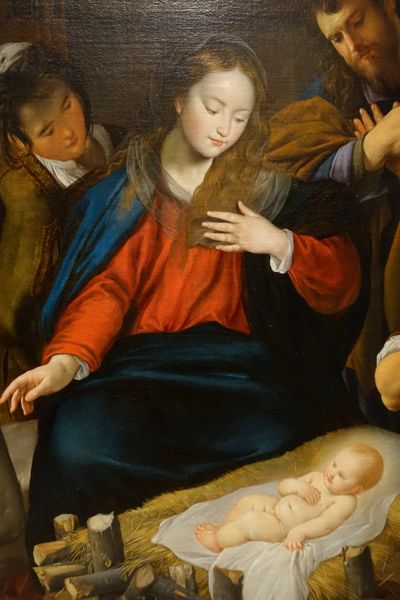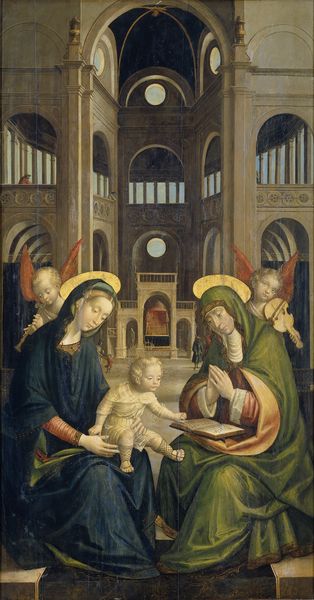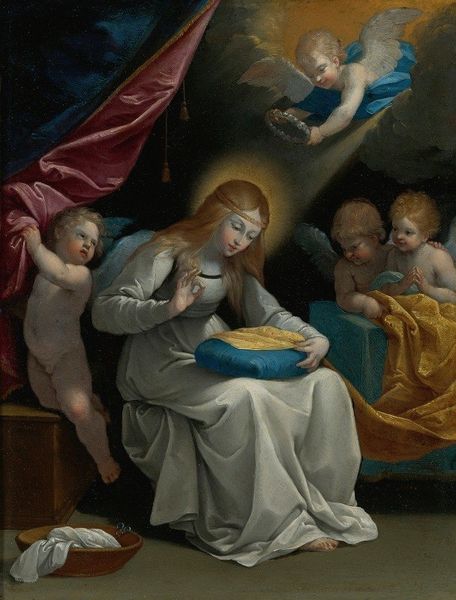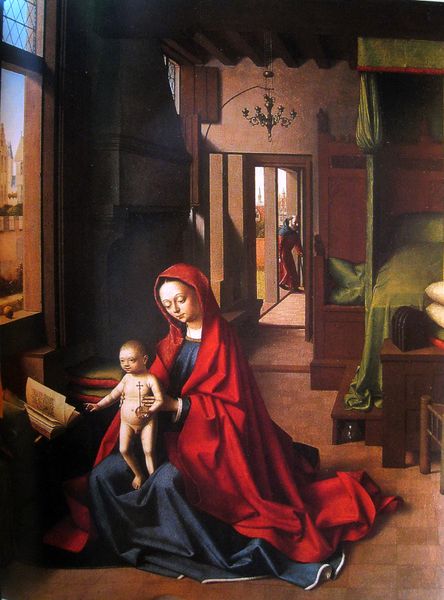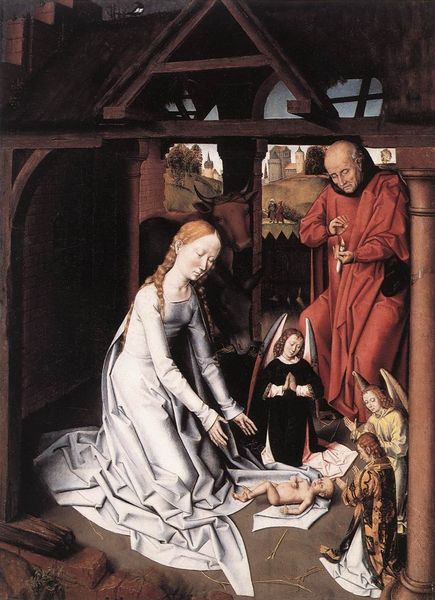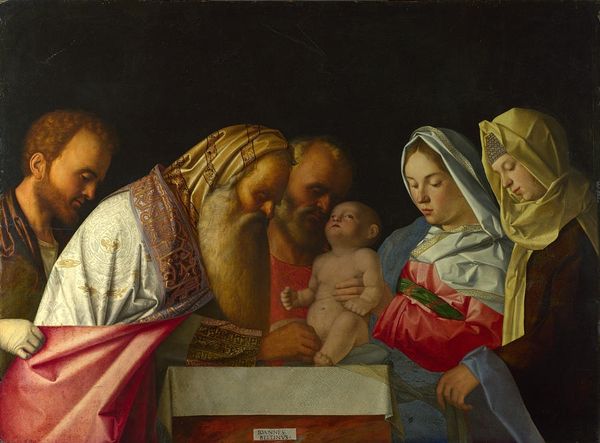
#
charcoal drawing
#
possibly oil pastel
#
oil painting
#
portrait reference
#
portrait head and shoulder
#
underpainting
#
animal drawing portrait
#
portrait drawing
#
portrait art
#
fine art portrait
Copyright: Public domain
Curator: Welcome. Here we have "Nativity at Night," created around 1490 by Geertgen tot Sint Jans. Editor: Oh, wow. It’s like a whispered secret, this painting. So hushed and intimate, bathed in that incredible light. It’s mostly darkness, actually, and the figures almost emerge from it. Curator: Sint Jans was a master of light and shadow. It’s remarkable how he manipulates the oil paint to create such a nocturnal scene. You have to remember this predates electric lighting. Night scenes would’ve been completely different, filled with deep shadows pierced only by candlelight or moonlight. This informed so much of the spiritual reflection of the time, where holiness appeared to breach the veil of worldly darknes.. Editor: It really does feel reverent. The angels gathered around the manger, and Mary with her downcast eyes… But that single light source – the baby Jesus! – is almost theatrical. It’s like a spotlight, isn't it? So intense, so… deliberate. That soft glow highlighting their faces, everything else seems to exist in this perpetual twilight. Curator: Art historians refer to that specific use of dramatic light and shadow as tenebrism, often deployed to emphasize a subject's profound symbolism. In this artwork, the location is a significant point to discuss: it represents not only birth, but the moment when God sends light to shine over everything. Editor: Do you think that level of controlled light can have implications for audiences? Is it creating piety for people, creating or imposing certain religious feelings that might not be felt otherwise? Curator: Early reception suggests people reacted similarly to you, marveling at how emotions came forward because of tenebrism, and there is documented scholarship showing how these reactions helped shape devotional and even religious ideas. That emotional connection was a key point of entry. Editor: It definitely has that power, to pull you into its quiet contemplation. I keep noticing something new. It's beautiful to look at the small expressions that define each character, especially the Virgin's face as she prays over her child. I can only wonder at the artist’s inspiration to create such an empathetic visual. Curator: A fine note to end on, as there is so much complexity to observe. Editor: Absolutely! I hope this piques visitors' curiosities to come see more!
Comments
No comments
Be the first to comment and join the conversation on the ultimate creative platform.
